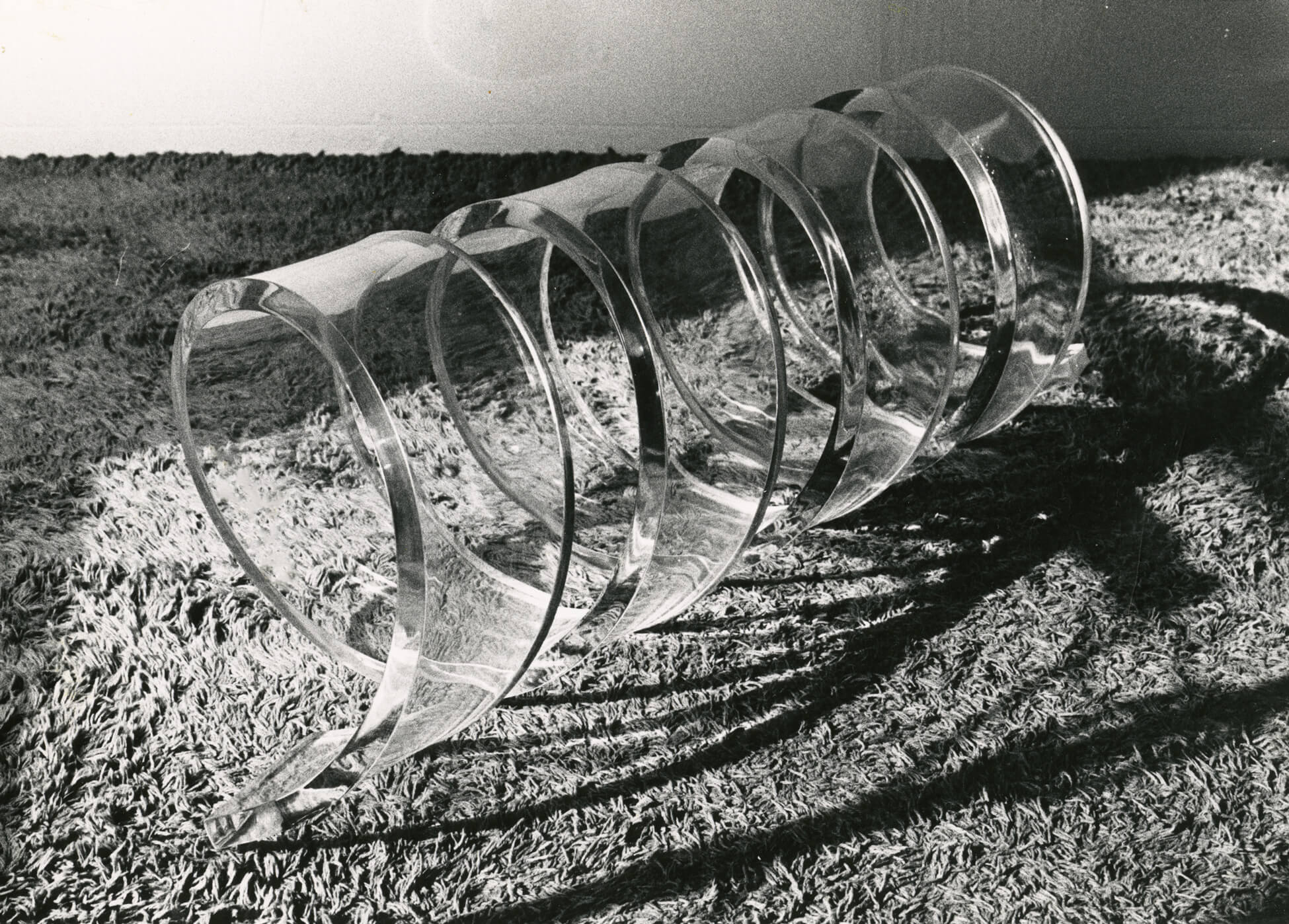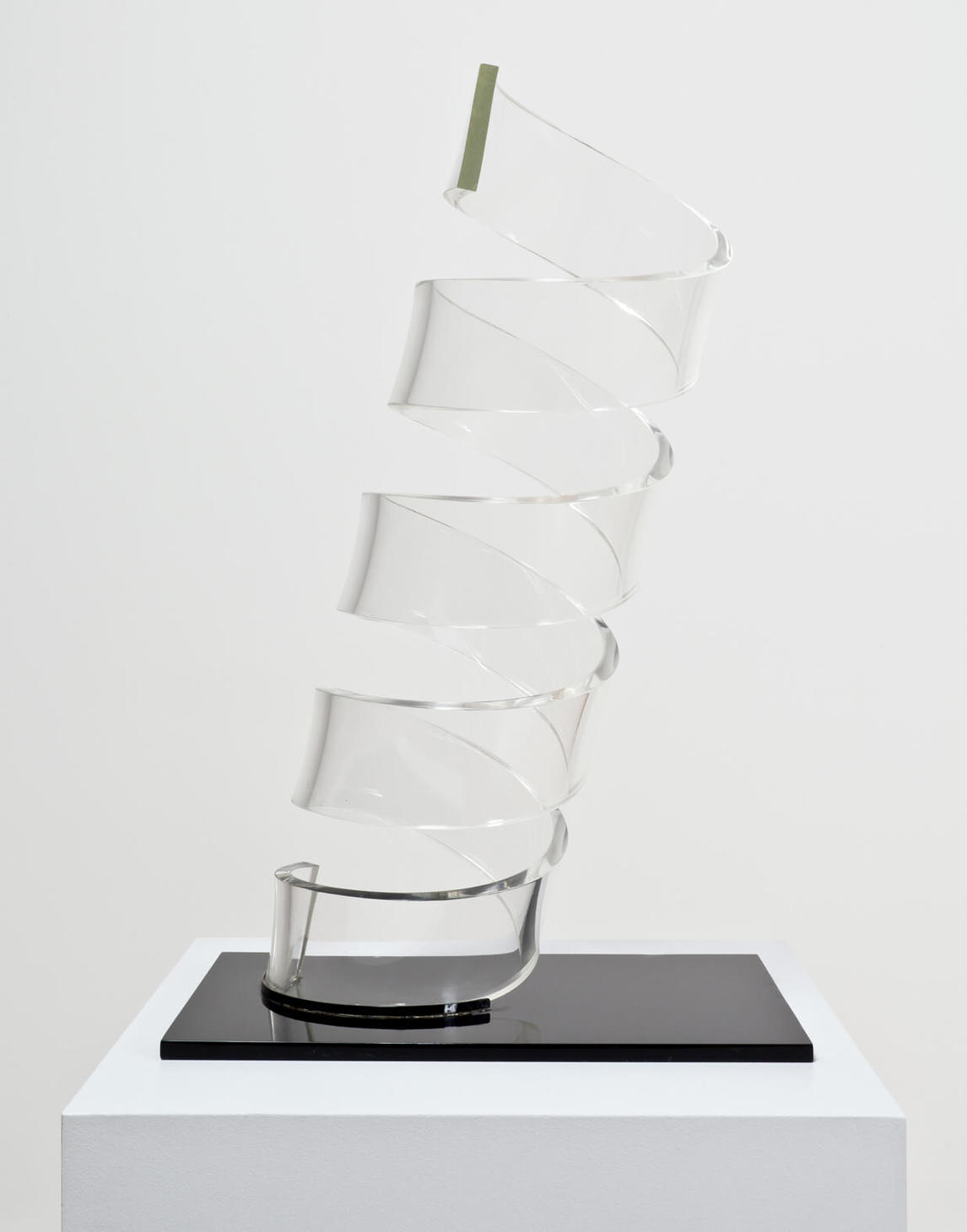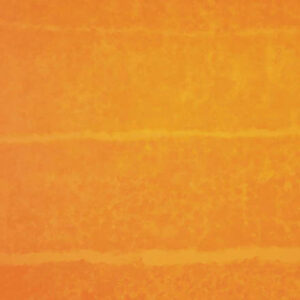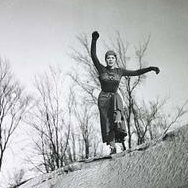Of One 1968–69

Françoise Sullivan, Of One (De une), 1968–69
Plexiglas, 243.8 x 73.7 cm
Musée national des beaux-arts du Québec, Quebec City
Moulded from a single sheet of Plexiglas, Of One is a translucent spiral that suggests infinite movement. Almost two and a half metres long and placed directly on the ground, it is a remarkably simple and elegant work that draws the viewer’s attention equally along its whole length. To create this sculpture, Sullivan worked at the Hickey Plastics company, where workers who made toys and household items taught her how to shape the malleable material. The Plexiglas sheet was heated, then pressed around a cylindrical form and moulded into a consistent spiral, with all areas of the surface of equal width and thickness. Then all traces of the process were erased by polishing.


Whereas Sullivan’s metallic sculptures such as Concentric Fall (Chute concentrique), 1962, and Callooh Callay, 1967, manage to suggest weightlessness in spite of their actual weight, Of One goes one step further: it seems to dematerialize before the viewer’s eyes as light flows through it and its edges disappear. The suggestion of infinity incarnated by the spiral might recall important earlier twentieth-century sculptural works, such as Constantin Brancusi’s (1876–1957) Endless Column, 1938, but it also evokes the archetypal figure of the circle. This shape punctuates Sullivan’s work throughout her career, from the spiralling movement of her body in the dances she choreographed to the accumulations of stones she created in the 1970s and the circular paintings of the 1980s.
In the late 1960s Minimalist sculpture, which reduced form to the essentials and downplayed personal expression, was going strong. Sullivan was very much influenced by it, even though her personal inclination was to make expressive and dynamic art. With Of One, she found a way to greatly simplify her work while remaining true to her interest in movement: “This was the most minimal sculpture I could imagine making.”

 About the Author
About the Author
 More Online Art Books
More Online Art Books
 Acknowledgements
Acknowledgements